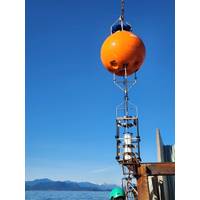
ASL Concludes Metocean Survey for Canada’s Gas Transmission System
ASL Environmental Sciences has completed a six-month metocean survey for FortisBC Energy as part of its ongoing operations and maintenance activities supporting its stewardship of the Vancouver Island’s gas transmission system.Wave buoys and subsea current profilers were deployed from December 2023 to June 2024, with a mid-program servicing trip in March 2024.All subsea equipment and wave buoy mooring anchors were successfully recovered, with full recovery of all datasets. The field program measured directional waves and subsea currents at six individual moorings deployed at three strategic
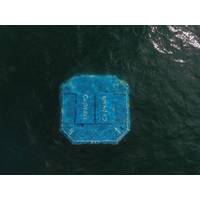
CalWave to Provide Wave Energy Tech for British Columbia Project
coastal communities along the North American Pacific Coast and around the world.The project is currently in a feasibility and design phase to gather all the necessary information for the MMFN to make an informed decision on full project buildout.Located on Nootka Island, just off the west coast of Vancouver Island, Yuquot is the traditional home of the MMFN.It was also the site of first contact between European explorers and Indigenous peoples on the west coast of North America, when Captain James Cook moored his ship in Nootka Sound in 1778.The community existed for thousands of years as a center of
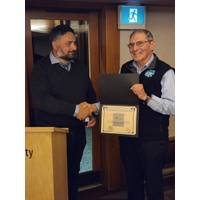
ASL’s Fissel Named a Fellow of CMOS
The Vancouver Island CMOS Center and ASL co-hosted a reception and award presentation ceremony at the University of Victoria, University Club, last month to honor those that have contributed significant scientific achievements. At theceremony, ASL’s David Fissel was named a Fellow of the Canadian Meteorological and Oceanographic Society (CMOS).Fissel was educated at the University of British Columbia, earning a B.Sc. in Honors Physics in 1971 and an M.Sc. in Physical Oceanography in 1975. His graduate research, carried out under Professor Steve Pond, was followed, in 1975, by working as a
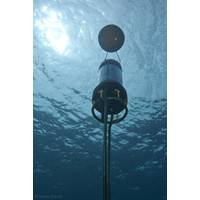
Teledyne Benthos Acoustic Modems Aid in Innovasea Fish Tracking
research platform that connects universities, businesses, not-for-profit organizations, and governments to track animal movements on a global scale. The OTN’s Pacific Ocean acoustic receiver arrays in the Queen Charlotte Strait, Juan de Fuca Strait, and the Northern Strait of Georgia span from Vancouver Island to the mainland, provide an integrated series of regional gates to document the coastal movements of acoustically tagged juvenile salmon migrating to sea, adult salmon returning from the sea to rivers in the region to spawn, and other coastal species’ movements.(Image: Teledyne Marine
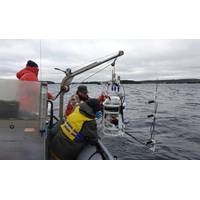
Dalhousie University: Quiet Oceans Speak Volumes During Lockdown
Columbia’s coastal waters.The paper, recently accepted for publication in the Journal of the Acoustical Society of America, reported measurable reductions in low-frequency sounds near major shipping routes between Canada and the U.S. Between January and April of this year, a hydrophone west of Vancouver Island recorded a 16% (1.5 decibels) decrease in noise power compared to the same time last year. And, in the usually busy Strait of Georgia, Barclay noticed that not only is the ocean getting quieter, but at a faster rate, too.The full effects of a quieter ocean are unknown, but they may lead to healthier
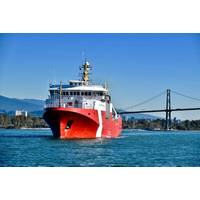
Seaspan-Built CCG Ship Heads for Sea Trials
Keel and to the quietness with which the ship’s engines perform at cruising and at fishing speeds and when in idle.Sea Trials will be largely conducted in the Strait of Georgia as part of a continuous 15-day exercise. Upon completion of Sea Trials, the ship will be moored at Ogden Point on Vancouver Island to prepare the vessel for Delivery to the Canadian Coast Guard, which is scheduled for later this year
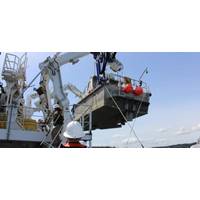
Scientists Map Fast-moving Fault off Alaska
Alaska and Canada better understand and prepare for the risks from earthquakes and tsunamis that can occur when faults suddenly move.Since 2015, scientists have been gathering data on the Queen Charlotte-Fairweather fault system, a 746-mile long strike-slip fault line that extends from offshore of Vancouver Island, Canada, to the Fairweather Range of southeast Alaska. The team has gathered high-resolution bathymetric data through multibeam sonar across 5,792 square miles of the ocean bottom.The most recent survey came from NOAA Ship Fairweather, with USGS scientists aboard from April through July, when

Ocean Networks Canada: 'Wiring the Abyss'
during the first leg of the ONC expedition in late June, and commissioning continued during the expedition’s second visit to the Cascadia Basin site in late July. The collection of detailed measurements over two years will assess the deep-sea site, approximately 200 kilometers southeast of Vancouver Island, for future use.“A potential full-scale neutrino observatory at Cascadia Basin would benefit particle physics, astrophysics, ocean science and marine biology by offering reliable long-term detection capabilities,” said Benoit Pirenne, ONC’s executive director of user engagement
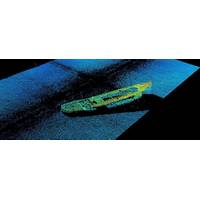
Case Study: 3DSS-DX-450 Sonar
Before coming to rest at the bottom of Lake Union in Washington State, J.E. Boyden was once a common sight along the shores of Puget Sound and Vancouver Island. The 85-foot vessel served as a cargo hauler and tug vessel for almost half a century during the final days of the tallship bulk carriers. Originally laid as one of the Seattle steamer fleet in 1888, the Boyden quickly made a name for herself as a powerful and capable tug, transporting coal, coke and lumber between ports on Vancouver Island and Puget Sound. The J.E. Boyden was also involved for many years as a tug for sailing ships entering the
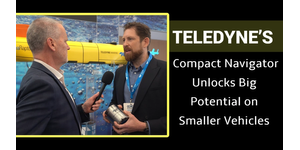
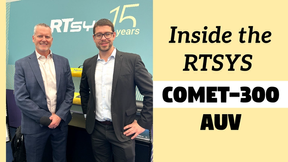

 February 2025
February 2025





